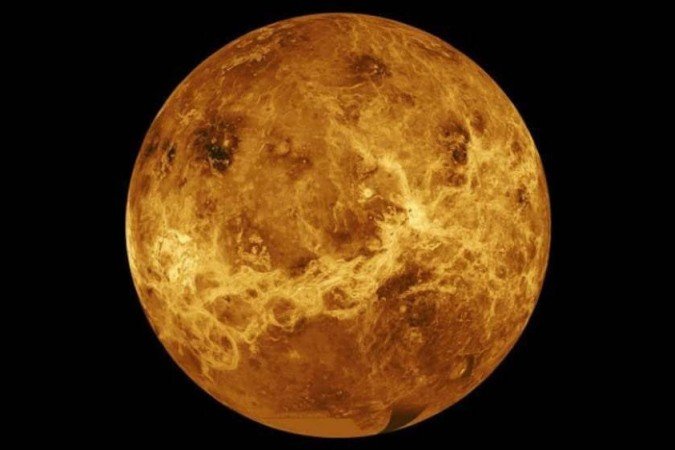Venus is unable to obtain water, which is the fate from which Earth has escaped
3 min read
Published 10/15/2021 5:09 PM

(credit: reproduction)
Venus, the “twin” of Earth, has never harbored water due to its temperature and pressure conditions, which reduces the possibility of life on it at some point, a study based on accurate climate models reveals.
“We may have underestimated the necessary requirements for water on planets like Earth or Venus, and even on exoplanets,” explained Martin Turbet, an AFP astrophysicist and climate scientist from the University of Geneva’s Astronomical Observatory.
We now know, through explorations and investigations, that Mars, for example, was covered by large expanses of water.
But the surface of Venus, hidden under thick clouds of sulfuric acid droplets, remains a mystery.
The great atmospheric pressure, more than 90 times that of Earth, and the infernal temperature of 470 degrees Celsius, make it almost impossible to send probes to the planet’s surface.
However, a 2016 study questioned whether Venus was at all habitable, assuming that its thick cloud cover could protect surface waters.
The results, published this week in Nature and signed by Martin Turbet, together with astrophysicists from French laboratories, cast doubt on that scenario.
Global Warming
“Before you know if there can be stable water on the surface of Venus, you have to know how it could have formed,” said Martin Turbet.
For this, it is necessary to analyze how, billions of years ago, a “very young and very hot” planet, with water in “atmospheric vapor form,” would have become a planet that, when cooled, could have formed water by condensation.
Turbet’s team used an accurate climate model that takes into account cloud formation and atmospheric circulation. The conclusions are categorical.
The sun has heated water vapor in Venus’s atmosphere to a temperature too high to allow clouds to form by condensation.
These clouds will shield the sun’s sunny part of the planet, allowing the atmosphere to cool enough for steam to condense to form water at the surface.
In addition, the air masses heated by the Sun in its exposed part, moved to the shadowed face of the planet, where very high clouds formed that caused global warming, preventing the atmosphere from cooling.
– Heat stroke – and why did the Earth, a rocky planet the same size as Venus, not suffer the same fate?
“When the Sun was young, four billion years ago, it was 25-30% smaller in size than it is today,” Turbet explained.
The heat received by our planet was not so high that it prevented the condensation of steam and the formation of water. Venus, which is much closer to the sun, has suffered heatstroke about twice as much as it does on Earth.
The study leaves a “small surprise,” Torbet explained: With Earth’s current insolation, “if all the seas evaporated, the situation would be stable.”
In other words, we will live in oceans of water vapor and condensation is unlikely. If the Sun had been a little warmer a few billion years ago, there would be no bodies of water on our planet, and certainly no life.
The climate model developed for Venus will be used to study exoplanets belonging to other solar systems. Meanwhile, life forms on Venus are unlikely.
Last year, another study reported a discovery in Venus’ clouds of a gas that could be associated with life. At the time, it was believed that the evaporation of surface waters on the planet could push life forms into clouds.
Several studies published since then have disproved these observations. Finally, in June, a new publication stated that life in these clouds was impossible due to a lack of water.

“Entrepreneur. Music enthusiast. Lifelong communicator. General coffee aficionado. Internet scholar.”

:strip_icc()/s04.video.glbimg.com/x720/11792055.jpg)

:strip_icc()/s03.video.glbimg.com/x720/11786998.jpg)



